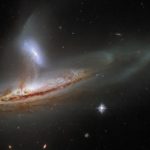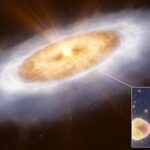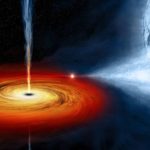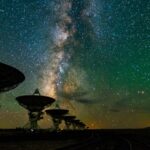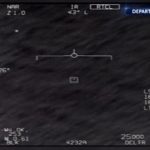NASA’s Perseverance rover has discovered circular rock structures on Mars that resemble those formed by microbial communities in some Earth lakes. However, this finding highlights the challenge in determining what might constitute evidence for life on Mars. While some scientists were initially excited by the structures, they soon recognized inconsistencies with a biological origin. The […]
astrophysics
Taming Gravity is all about the possibility through science and technology to harness gravity. If we accomplish this we will then have the means to travel to the stars.
Of course, to do this will involve knowledge of astrophysics.
So, here at Taming Gravity we include inspiring news and breakthroughs happening in the field of astrophysics.
NASA’s interstellar Voyager probes get software updates beamed from 12 billion miles away
NASA’s Voyager 1 and Voyager 2, launched about 46 years ago, are still receiving software updates to keep them functioning and in contact with Earth. Recently, Voyager 1 began transmitting corrupted data, so a software fix was created to address this issue. Another set of updates is aimed at preventing the build-up of residue in […]
NASA scientists push for a treaty to tackle risky ‘space junk’
NASA scientists and other experts are calling for a legally binding treaty to manage “space junk” and protect Earth’s orbit. The space around our planet is increasingly crowded, with over 9,000 satellites in orbit today and projections that this number could rise to 75,000 by 2030. Disused satellites and their fragments pose a threat to […]
‘Missing link’ protostar may prove solar system’s water is older than the sun
Astronomers have discovered a disk of planet-forming material around a distant star, V883 Orionis, which contains hundreds of times more water than all of Earth’s oceans. The discovery could provide insights into how water travels from star-forming gas and dust clouds to planets, and may also suggest that Earth’s water is older than the sun. […]
The World’s First 3D-Printed Rocket Is About to Launch
Relativity Space, a California-based startup, is ready to launch its almost entirely 3D-printed rocket, Terran 1, from Cape Canaveral, Florida. This launch marks a significant step towards the broader use of 3D printing in the space industry. The company hopes to eventually use the technology to build tools, spacecraft, and infrastructure in orbit, on the […]
Star survives spaghettification by black hole
A star has survived multiple close encounters with a supermassive black hole in a distant galaxy, despite having material ripped away by immense gravitational tidal forces. This violent process, known as a tidal disruption event (TDE), usually results in the destruction of the star. However, a flare spotted in a distant galaxy 893 million light-years […]
A comet coming in 2024 could outshine the stars – if we’re lucky
A newly discovered comet, C/2023 A3 (Tsuchinshan–ATLAS), might light up the skies in the fall of 2024. The comet was initially thought to be an asteroid when it was discovered by the Asteroid Terrestrial-impact Last Alert System (ATLAS) in South Africa in February 2023. However, images captured later revealed a condensed coma and short tail, […]
Wormholes might bend light like black holes do — and that could be the key to finding them
Wormholes, theoretical portals that could allow for rapid travel across vast distances, could potentially magnify the light of distant objects by up to 100,000 times, which could be a key to finding them. Researchers have built a model to simulate an electrically charged, spherical wormhole and its effects on the universe around it. The model […]
Where Is ET?
Introduction to the Search for Extraterrestrial Life Historical Context of Alien Inquiry The quest to understand whether we are alone in the universe has captivated humanity for centuries. Historical accounts suggest that even ancient civilizations pondered the existence of life beyond Earth. The modern era of alien inquiry, however, began to take shape with the […]
James Webb Space Telescope uncovers starbirth clues at ‘cosmic noon’ for 33,000 young stars
The James Webb Space Telescope (Webb) has provided new insights into early star formation by capturing images of over 33,000 young stars in the NGC 346 nebula, located in the Small Magellanic Cloud galaxy. This galaxy, one of the Milky Way’s closest neighbors, is a unique environment for studying early galaxies due to its lack […]


